
The president of the Community of Madrid is the highest-ranking officer of the Autonomous Community of Madrid and the head of the executive branch. The office is currently held by Isabel Díaz Ayuso of the People's Party.

The president of the Regional Government of Galicia, is the head of government of Galicia. The president leads the executive branch of the regional government.

The Can de Palleiro is a traditional Spanish breed of shepherd dog from the autonomous community of Galicia in north-western Spain. It was recognised by royal decree in 2001, and the stud-book was established in the same year. It is named after the haystack near which it traditionally sleeps.

The president of the Regional Government of Andalusia or, simply the president of Andalusia, is the premier of the devolved government of the Spanish autonomous community of Andalusia. The presidency is one of the three branches of the Regional Government of Andalusia (Junta de Andalucía), the institution whereby the government of the community is organized. The other two branches of are the Parliament of Andalusia and the Council of Government.
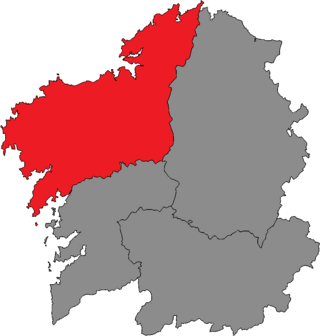
A Coruña is one of the four constituencies represented in the Parliament of Galicia, the regional legislature of the autonomous community of Galicia. The constituency currently elects 25 deputies. Its boundaries correspond to those of the Spanish province of A Coruña. The electoral system uses the D'Hondt method and a closed-list proportional representation, with a minimum threshold of five percent.

Lugo is one of the four constituencies represented in the Parliament of Galicia, the regional legislature of the autonomous community of Galicia. The constituency currently elects 14 deputies. Its boundaries correspond to those of the Spanish province of Lugo. The electoral system uses the D'Hondt method and a closed-list proportional representation, with a minimum threshold of five percent.

Ourense is one of the four constituencies represented in the Parliament of Galicia, the regional legislature of the autonomous community of Galicia. The constituency currently elects 14 deputies. Its boundaries correspond to those of the Spanish province of Ourense. The electoral system uses the D'Hondt method and a closed-list proportional representation, with a minimum threshold of five percent.
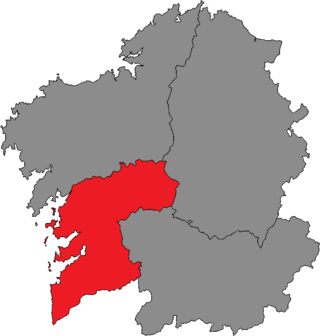
Pontevedra is one of the four constituencies represented in the Parliament of Galicia, the regional legislature of the autonomous community of Galicia. The constituency currently elects 22 deputies. Its boundaries correspond to those of the Spanish province of Pontevedra. The electoral system uses the D'Hondt method and a closed-list proportional representation, with a minimum threshold of five percent.

The Third Feijóo Government was the regional government of Galicia led by President Alberto Núñez Feijóo between 2016 and 2020. It was formed in November 2016 after the September regional election.

The first government of Juan Manuel Moreno was formed on 22 January 2019, following the latter's election as President of the Regional Government of Andalusia by the Parliament of Andalusia on 16 January and his swearing-in on 18 January, as a result of the People's Party (PP) and Citizens (Cs) being able to muster a majority of seats in the Parliament with external support from Vox following the 2018 Andalusian regional election. It succeeded the second Díaz government and was the Regional Government of Andalusia from 22 January 2019 to 26 July 2022, a total of 1,281 days, or 3 years, 6 months and 4 days.

The second government of Emiliano García-Page was formed on 8 July 2019, following the latter's election as President of the Junta of Communities of Castilla–La Mancha by the Cortes of Castilla–La Mancha on 3 July and his swearing-in on 5 July, as a result of the Spanish Socialist Workers' Party (PSOE) emerging as the largest parliamentary force at the 2019 regional election with an absolute majority of seats. It succeeded the first García-Page government and is the incumbent Junta of Communities of Castilla–La Mancha since 8 July 2019, a total of 1,776 days, or 4 years, 10 months and 10 days.
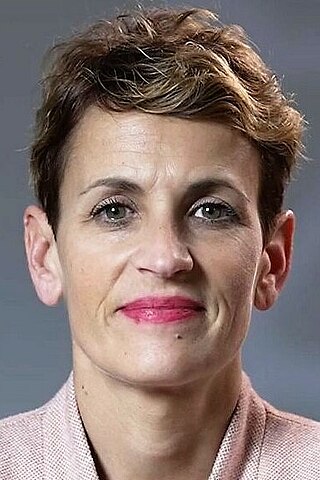
The first government of María Chivite was formed on 7 August 2019, following the latter's election as President of the Government of Navarre by the Parliament of Navarre on 2 August and her swearing-in on 6 August, as a result of the Socialist Party of Navarre (PSN–PSOE) being able to muster a majority of seats in the Parliament together with Geroa Bai (GBai) and Podemos, with external support from EH Bildu and Izquierda-Ezkerra (I–E), following the 2019 Navarrese regional election. It succeeded the Barkos government and was the Government of Navarre from 7 August 2019 to 18 August 2023, a total of 1,472 days, or 4 years and 11 days.

The 2024 Galician regional election was held on Sunday, 18 February 2024, to elect the 12th Parliament of the Autonomous Community of Galicia. All 75 seats in the Parliament were up for election.

The fourth government of Alberto Núñez Feijóo was formed on 7 September 2020, following the latter's reelection as President of Galicia by the Parliament of Galicia on 3 September and his swearing-in on 5 September, as a result of the People's Party (PP) emerging as the largest parliamentary force at the 2020 Galician regional election. It succeeded the third Feijóo government and was the Government of Galicia from 7 September 2020 to 16 May 2022, a total of 616 days, or 1 year, 8 months and 9 days.
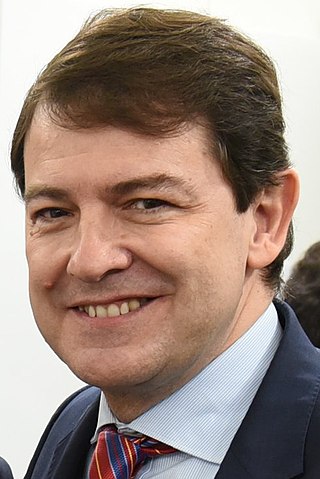
The second government of Alfonso Fernández Mañueco was formed on 20 April 2022, following the latter's election as President of the Junta of Castile and León by the Cortes of Castile and León on 11 April and his scheduled swearing-in on 19 April, as a result of the People's Party (PP) and Vox being able to muster a majority of seats in the Cortes following the 2022 Castilian-Leonese regional election. It succeeded the first Mañueco government and has been the incumbent Junta of Castile and León since 20 April 2022, a total of 759 days, or 2 years and 28 days.

The government of Alfonso Rueda was formed on 16 May 2022, following the latter's election as President of Galicia by the Parliament of Galicia on 12 May and his swearing-in on 14 May, after the resignation of the former president Alberto Núñez Feijóo in April. It succeeded the fourth Feijóo government and was the incumbent Government of Galicia since 16 May 2022 until 15 April 2024, a total or 1 year, 10 months and 30 days.

Alfonso Rueda Valenzuela is a Spanish People's Party (PP) politician. Elected to the Parliament of Galicia in 2009, he succeeded Alberto Núñez Feijóo as president of the People's Party of Galicia (PPdeG) and President of the Regional Government of Galicia in 2022. In the 2024 election, he led the party to another absolute majority.
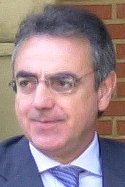
The fourth government of Miguel Sanz was formed on 17 August 2007, following the latter's election as President of the Government of Navarre by the Parliament of Navarre on 11 August and his swearing-in on 16 August, as a result of Navarrese People's Union (UPN) emerging as the largest parliamentary force at the 2007 Navarrese regional election and forming an alliance together with the Convergence of Democrats of Navarre (CDN). It succeeded the third Sanz government and was the Government of Navarre from 17 August 2007 to 2 July 2011, a total of 1,415 days, or 3 years, 10 months and 15 days.
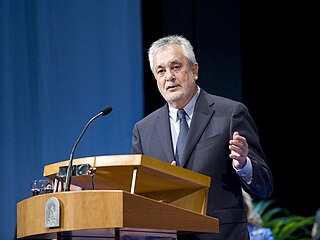
The first government of José Antonio Griñán was formed on 24 April 2009 following the latter's election as President of Andalusia by the Parliament of Andalusia on 22 April and his swearing-in on 23 April, as a result of the resignation of the former president, Manuel Chaves, upon his nomination as Third Deputy Prime Minister in the second government of José Luis Rodríguez Zapatero. It succeeded the sixth Chaves government and was the Government of Andalusia from 24 April 2009 to 7 May 2012, a total of 1,109 days, or 3 years and 13 days.


















